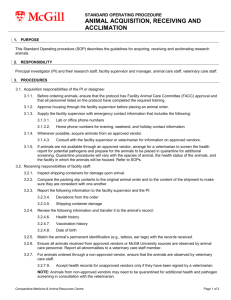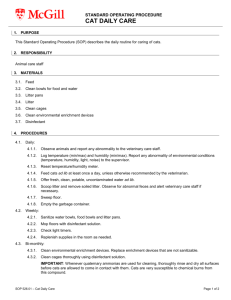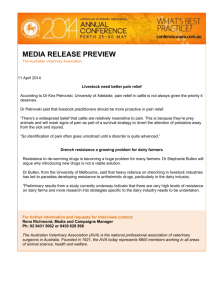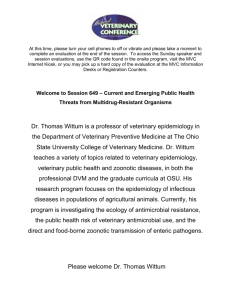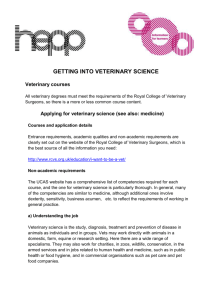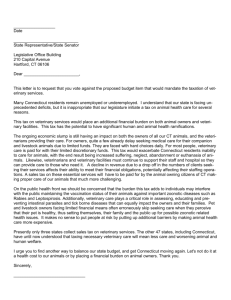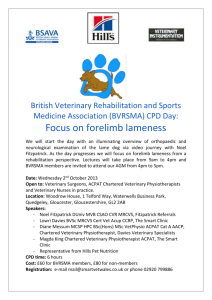4.10. Record all significant clinical events on the clinical record
advertisement
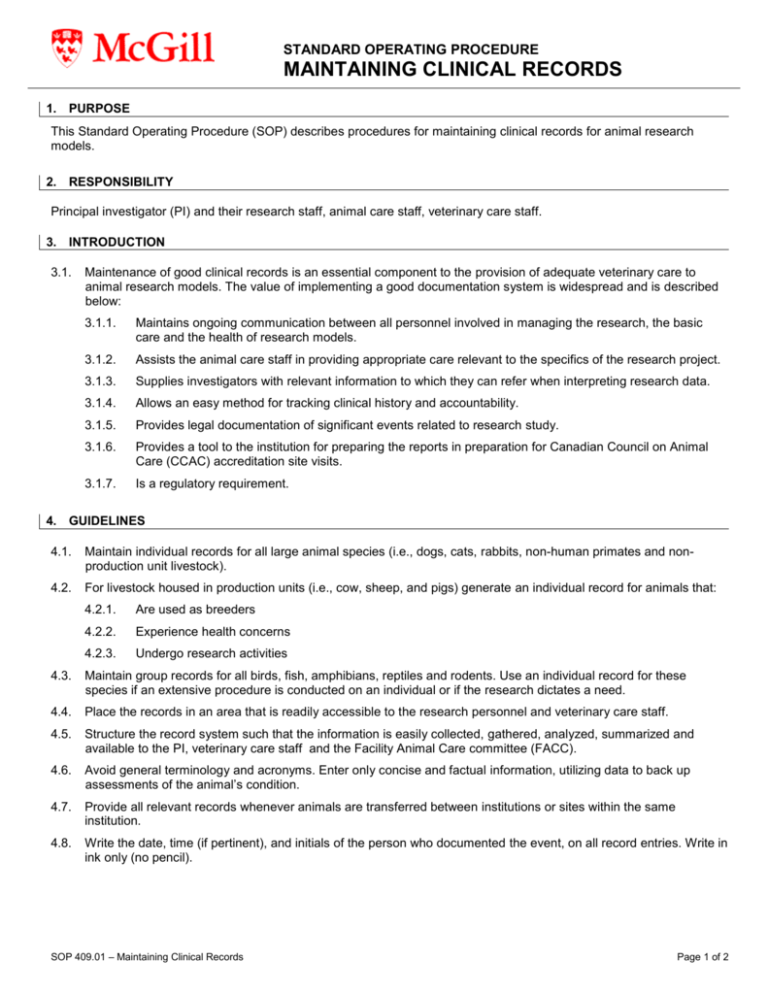
STANDARD OPERATING PROCEDURE MAINTAINING CLINICAL RECORDS 1. PURPOSE This Standard Operating Procedure (SOP) describes procedures for maintaining clinical records for animal research models. 2. RESPONSIBILITY Principal investigator (PI) and their research staff, animal care staff, veterinary care staff. 3. INTRODUCTION 3.1. Maintenance of good clinical records is an essential component to the provision of adequate veterinary care to animal research models. The value of implementing a good documentation system is widespread and is described below: 3.1.1. Maintains ongoing communication between all personnel involved in managing the research, the basic care and the health of research models. 3.1.2. Assists the animal care staff in providing appropriate care relevant to the specifics of the research project. 3.1.3. Supplies investigators with relevant information to which they can refer when interpreting research data. 3.1.4. Allows an easy method for tracking clinical history and accountability. 3.1.5. Provides legal documentation of significant events related to research study. 3.1.6. Provides a tool to the institution for preparing the reports in preparation for Canadian Council on Animal Care (CCAC) accreditation site visits. 3.1.7. Is a regulatory requirement. 4. GUIDELINES 4.1. Maintain individual records for all large animal species (i.e., dogs, cats, rabbits, non-human primates and nonproduction unit livestock). 4.2. For livestock housed in production units (i.e., cow, sheep, and pigs) generate an individual record for animals that: 4.2.1. Are used as breeders 4.2.2. Experience health concerns 4.2.3. Undergo research activities 4.3. Maintain group records for all birds, fish, amphibians, reptiles and rodents. Use an individual record for these species if an extensive procedure is conducted on an individual or if the research dictates a need. 4.4. Place the records in an area that is readily accessible to the research personnel and veterinary care staff. 4.5. Structure the record system such that the information is easily collected, gathered, analyzed, summarized and available to the PI, veterinary care staff and the Facility Animal Care committee (FACC). 4.6. Avoid general terminology and acronyms. Enter only concise and factual information, utilizing data to back up assessments of the animal’s condition. 4.7. Provide all relevant records whenever animals are transferred between institutions or sites within the same institution. 4.8. Write the date, time (if pertinent), and initials of the person who documented the event, on all record entries. Write in ink only (no pencil). SOP 409.01 – Maintaining Clinical Records Page 1 of 2 4.9. Include all basic animal information on all animal records: 4.9.1. Species 4.9.2. Individual identification number or batch number 4.9.3. Sex 4.9.4. Date of birth or acquisition date 4.9.5. Source 4.9.6. Sire and dam identification when relevant 4.10. Record all significant clinical events on the clinical record: 4.10.1. Clinical histories including history of surgical procedures and post operative care. 4.10.2. Any significant changes in environment such as facility transfers, room to room transfers, change type of caging or bedding used. 4.10.3. Preventative medicine measures taken including dates of vaccinations, de-worming and parasite and sentinel screening. 4.10.4. Details of experimental use or events that may cause pain, distress or discomfort 4.10.5. All drugs/test substances administered including medication names, dosages, routes and volumes of administration, name of personnel that administered medication and withdrawal times for any agents administered to livestock animals 4.10.6. Blood collection volumes and sites. 4.10.7. Observations of abnormal behavior or physical problems. 4.10.8. Physical exams and veterinary checks, clinical signs, diagnoses, laboratory results, prognosis, treatments and resolution of events. 4.10.9. Follow up on the improvement or deterioration of animal’s condition and related treatments and interventions. 4.10.10. Record of euthanasia, including the method and agent used. 4.10.11. Necropsy observations and pathology results. 4.11. In addition to basic clinical records, specific records should be maintained for the following: 4.11.1. Anesthesia monitoring 4.11.2. Transgenic phenotype logs 4.11.3. Breeding records 4.11.4. Mortality logs 4.11.5. Treatment logs Comparative Medicine & Animal Resources Centre Page 2 of 2 SOP 409.01 – Maintaining Clinical Records Written by: Jim Gourdon Revised on (yy-mm-dd): 09-03-05 Revision # 01 Effective date (yy-mm-dd): 09-02-17




